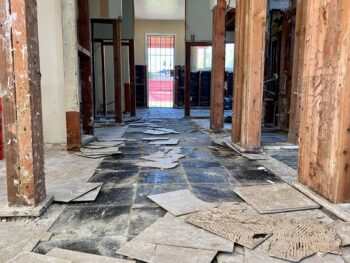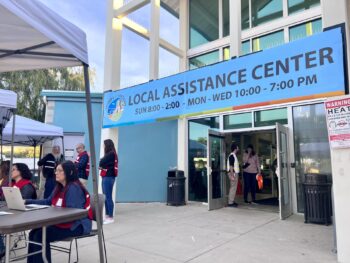In a domestic disturbance call involving a teenager, the family often wants them out of the house. Even in relatively minor incidents – pushing a parent or punching a hole in a wall in anger – the child may face battery or vandalism charges. And if the young person doesn’t have another place to stay for the night, law enforcement’s only choice is to take the child to the Juvenile Detention Center in Kearny Mesa.
A pilot program offers another option. Alternatives to Detention allows juveniles with very minor offenses to be placed in temporary foster care, or a “cool bed,” until their home situation settles down. At the same time, the juveniles and their entire families also receive services to help manage the situation. This pilot program, running in the South Bay and central San Diego, is about to expand to the rest of the county thanks to a new $1 million federal grant.
“The expansion of Alternatives to Detention will fill a void for these specialized services to our youth in north and east counties,” said Probation Chief Mack Jenkins. “Over the last several years we have achieved tremendous success in diverting youth from the juvenile justice system and keeping low risk youth out of custody. This grant will allow us to build on that success by providing additional resources and options for youth at risk of deeper penetration into the system.”
The program is not just about a place to stay. Probation and other law enforcement agencies conduct an assessment and connect the entire family with a comprehensive set of services. Supervising Probation Officer Christine Prue said that can include recommended counseling such as anger management training, mental health services, substance abuse treatment, tutoring, or domestic violence or grief counseling to prevent the problem from escalating and youth from entering the juvenile justice system.
From January 2012 through December 2014, 377 youth enrolled in Alternatives to Detention. Of those, 339 have successfully completed the program, and in 85 percent of the cases closed prior to December, they were not rearrested within six months later, said Division Chief Margie DeLeon.
Teenagers or younger children referred to the program benefit because they can remain in their community and attend their own school rather than a Juvenile Hall school. The youth aren’t detained with higher-risk offenders, and they often are reunited with their families faster than when they are detained.
The San Diego County Probation Department will continue to partner with South Bay Community Services and Social Advocates for Youth to run the services portion of the program in South Bay. San Diego Youth Services, North County Lifeline, and Mental Health Services will assist with those services in the north and east counties.
The Alternatives to Detention pilot was originally funded by a three-year grant from the California Department of Corrections. That funding ended in December, and since then various agencies have been covering the costs to keep the program going.
San Diego County Probation applied for additional funding and was notified recently it had been awarded a $1,045,625 grant from the Board of State and Community Corrections as part of the Edward Byrne Memorial Justice Assistance Grant Funds. JAG awarded $16.6 million in funding to 32 counties for public safety projects that reduce school violence, reduce gang involvement, increase graduation rates or provide detention alternatives to low-risk juveniles.






